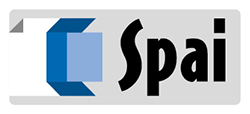Risk analysis, is it time for a change of mentality?
In Europe, the development of risk analysis in the pharmaceutical sector took its first steps in 1998, as an appendix to the Gamp (Good automated manufacturing practice) guidelines. The fifth revision of the Gamp guidelines clearly states that “the application of quality risk management makes it possible to concentrate efforts on the critical aspects of a computerised system in a controlled and justified manner”. This is where the focus of the question lies: as the guidelines of the Italian Pharmaceutical Association (AFI) state, it is necessary “to conduct an accurate risk analysis of the system to be validated. This will avoid wasting precious human and economic resources in in-depth and unnecessary validation activities”. A total awareness of the process and a deep knowledge of the technologies is needed in order to assess the potential impact of a malfunction on patient safety, product quality and data integrity. A change of mentality would lead to faster, better managed validations and lower costs as well.
Fabio Giovanni Farneti, founder of SPAI in Bologna, a leading company in pharmaceutical validation, is convinced of this, with over 4,000 validation activities and several hundred risk analyses carried out for leading manufacturers and pharmaceutical industries.
“Today, the issue of risk analysis is still largely addressed according to a vision influenced by old habits and does not fully meet the objective of the guidelines, – explains Fabio Giovanni Farneti, founder of the Bologna-based SPAI -. What is happening today, in a large part of cases, is affected by a generational component and by an understandable concern over changes, leading to the demand for unnecessary and irrelevant controls that do not affect the risk, also with a view to avoiding uncomfortable standpoints during the countless inspection visits to which manufacturers are subjected. However, this makes it more expensive to carry out the risk analysis and the resulting documentation will be pompous and difficult to manage when the inevitable updates have to be reported”.
Risk analysis, what are the main difficulties?
“A risk analysis must be carried out on the entire production system and cannot be considered as a summation of different analyses for each individual machine in the system. Conducting a risk analysis for a pharmaceutical company, on a complex manufacturing and packaging system, is not easy because it requires very deep technical and engineering skills, detailed knowledge of machines and lines that can be composed of technologies from multiple suppliers and that can evolve over time. Usually external expertise is used or technology suppliers are relied upon. However, they provide their individual analyses which, both in approach and in content, are not always centred on the quality of the product intended for consumers or healthcare facilities. Beyond this, it is also necessary to consider the aspect of updating, which is a sore point, often underestimated”.
What do you mean?
“The analysis document, once delivered, does not end at that moment, but must always be kept up to date with any changes in the process or technology that may determine a qualitative impact on the product. Focusing only on the parts that can actually be decisive in the production cycle is really more performing and better updatable over time. A good understanding of the analysis and the relative documentation allows a simpler management of updates. In other words, the document is useful as long as it is easy to manage and update”.
Ultimately, how do you believe that the objective can be fully achieved?
“At the present state, there are still major difficulties in understanding what are the really important parts that can actually put the health of the consumer at risk. At SPAI, we have been involved in risk analysis since it was not mandatory and for this reason we have spent many years studying analytical methods, developing a rapid and effective validation process that fully achieves the objective indicated by the guidelines for smaller investments compared to the approaches dictated by custom. The diffusion of new methodologies that are more performing from a qualitative point of view, however, requires a cultural process in companies. We must work on this cultural passage, even before on technical matters”.





